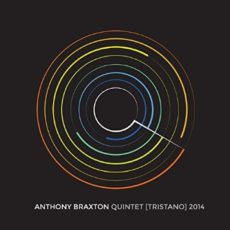
Daily Dose Of Jazz…
Anthony Braxton was born June 4, 1945 in Chicago, Illinois. He studied philosophy at Roosevelt University and early in his career he led a trio with violinist Leroy Jenkins and trumpeter Wadada Leo Smith. He was involved with the Association for the Advancement of Creative Musicians (AACM) founded in his birthplace.
In 1969, Braxton recorded the double album For Alto, the first full-length album for unaccompanied saxophone. The album’s tracks were dedicated to Cecil Taylor and John Cage among others. The album influenced other artists like soprano saxophonist Steve Lacy and trombonist George Lewis, who would go on to record their own solo albums.
Joining pianist Chick Corea’s trio with bassist Dave Holland and Barry Altschul they form the short-lived avant garde quartet Circle around 1970. When Corea broke up the group to form Return To Forever, Holland and Altschul remained with Braxton for much of the 1970s as part of a quartet, rotating Kenny Wheeler, George Lewis and Ray Anderson. With Sam Rivers they recorded Holland’s This group recorded for Arista Records and the core trio with saxophonist Sam Rivers recorded Holland’s Conference of the Birds on ECM. In the 1970s he recorded duets with Lewis and with synthesizer player Richard Teitelbaum. In 1975, he released Muhal with the Creative Construction Company featuring Richard Davis, Steve McCall, Muhal Richard Abrams, Wadada Leo Smith and Leroy Jenkins. He would oo on to record through the 70s, 80s and early 90s wth Marilyn Crispell, Mark Dresser and Gerry Hemingway.
He performed at the Woodstock Jazz Festival, was awarded a MacArthur Fellowship, composed his Ghost Trance Music released on his now defunct Braxton House label, and the final Ghost House live recordings at the New York City Iridium club were released by Firehouse 12 label in 2007. He recorded a prodigious series of multi-disc sets of standards during the 1990 and early 2000s
Besides playing saxophone, Braxton also plays clarinet, flute and piano, performs and records in the avant-garde, improvisation, bebop and mainstream genres, composes operas, orchestral and classical compositions, and is an avid chess player. He is the author of multiple volumes explaining his theories and pieces, such as the philosophical three-volume Triaxium Writings and the five-volume Composition Notes.
Composer and instrumentalist Anthony Braxton has released well over 100 albums since the 1960s, has taught at Mills College in the Eighties, was Professor of Music at Wesleyan University from the 1990s until his retirement at the end of 2013, and in 2013, was named a 2014 National Endowment for the Arts Jazz Master.
![]()
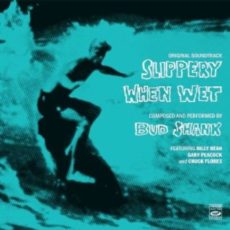
Daily Dose Of Jazz…
Bud Shank was born Clifford Everett Shank, Jr. on May 27, 1926 in Dayton, Ohio. He began with clarinet in Vandalia, Ohio, but had switched to saxophone before attending the University of North Carolina. While at UNC he was initiated into the Pi Kappa Alpha Fraternity.
In 1946 he worked with Charlie Barnet before working with Stan Kenton and the West Coast jazz scene. He also had a strong interest world music, playing Brazilian-influenced jazz with Laurindo Almeida in 1953–54, and in 1962 fusing jazz with Indian traditions in collaboration with Indian composer and sitar-player Ravi Shankar.
He spent the 1960s as a first-call studio musician in Hollywood and is also well known for the alto flute solo on the song California Dreamin’ recorded by The Mamas & the Papas in 1965. By 1974 Shank had joined with Ray Brown, Shelly Manne and Laurindo Almeida to form the group the L.A. Four, recording and touring extensively through 1982. He helped to popularize both Latin-flavored and chamber jazz music performing with orchestras as diverse as the Royal Philharmonic, the New American Orchestra, the Gerald Wilson Big Band, Stan Kenton’s Neophonic Orchestra, and Duke Ellington.
In 2005 he formed the Bud Shank Big Band in Los Angeles, California to celebrate the 40th anniversary of Stan Kenton’s Neophonic Orchestra.
A documentary film, Bud Shank “Against the Tide” Portrait of a Jazz Legend, was produced and directed by Graham Carter of Jazzed Media and released by Jazzed Media as a DVD and CD) in 2008. The film has been awarded 4 indie film awards including an Aurora Awards Gold.
Alto saxophonist Bud Shank, who also played tenor and baritone saxophone, passed away on April 2, 2009, of a pulmonary embolism at his home in Tucson, Arizona, one day after returning from San Diego, California, where he was recording a new album.
![]()
#preserving genius
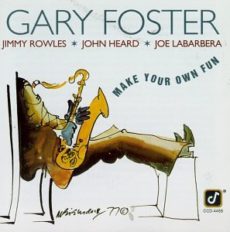
Daily Dose Of Jazz…
Gary Foster was born May 25, 1936 in Leavenworth, Kansas and started on the clarinet at age 13. His first personal musical inspiration was Olin Parker, his Jr. High School music director and private teacher who introduced him to Woody Herman, Count Basie and many other types of music. He listened closely to the Woody Herman orchestra recording of “Four Brothers” from the late 1940s which featured jazz saxophonists Stan Getz, Zoot Sims and Serge Chaloff and for him, Getz stood out on the tenor saxophone because of his tone. but Lester Young and Charlie Parker were also major influences.
His earliest professional experience was at age of 15 playing Leavenworth VFW Hall dances with bassist Harold Stanford. After high school Gary studied at Central College in Fayette, Missouri, he then transferred to the University of Kansas studying classical clarinet, music education, musicology and conducting. While there he met and played with Kansas City jazz trumpet great Carmell Jones.
In 1961 at age 26 Foster moved to Los Angeles, California to join the West Coast jazz scene, teaching privately and studying the flute but finding little work for a saxophonist to make a living only playing jazz he turned to studio work as a woodwind doubler to support his family. His initial associations and friendships with Clare Fischer and Warne Marsh were vital to Foster’s artistic approach to music and jazz improvisation.
He joined at its inception in 1973 he was a member of the Grammy Award winning Toshiko Akiyoshi – Lew Tabackin Big Band, worked with the big bands of Clare Fischer, Louis Bellson, Mike Barone, Ed Shaughnessy, and the Marty Paich Dek-tette, as well as with Cal Tjader, Poncho Sanchez, Sammy Nestico, Shelly Manne, and Rosemary Clooney and numerous others.
For over 45 years he has made his studio work has included television, movies, recordings, media and soundtracks such as Monsters, Inc., Ice Age, Elf, Meet The Fokkers, and Haunted Mansion to name a few. Foster has been in the Academy Awards Television Orchestra for 30 different broadcasts of the show, performed regularly with the Los Angeles Philharmonic, the Los Angeles Chamber Orchestra, the Los Angeles Opera Orchestra and the Hollywood Bowl Orchestra.
Saxophonist, clarinetist and flutist Gary has taught at Pasadena City College, University of Missouri, University of California, Los Angeles and California State University and founded Nova Music Studios. He has co-authored educational materials and conducts clinics at colleges and performs and lectures at professional music symposiums.
![]()
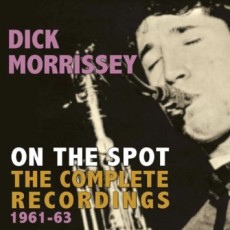
Daily Dose Of Jazz…
Richard Edwin Morrissey was born May 9, 1940 in Horley, England. Better known to the world as Dick Morrissey, he was self-taught and started playing clarinet in his school band, The Delta City Jazzmen, at the age of sixteen with fellow pupils Robin Mayhew, Eric Archer, Steve Pennells, Glyn Greenfield and young brother Chris on tea-chest bass. He then joined the Original Climax Jazz Band. This stint he followed with becoming a member of the Gus Galbraith Septet and was introduced to Charlie Parker by alto-sax player Peter King. This prompted him to begin specializing on tenor saxophone.
Making his name as a hard bop player, Dick appeared regularly at the Marquee Club in 1960 and recorded his first solo album for Fantana Records It’s Morrissey, Man! the next year at the age of 21. It featured pianist Stan Jones, drummer Colin Barnes, and The Jazz Couriers founding member bassist Malcolm Cecil.
Spending most of 1962 in Calcutta, India as part of the Ashley Kozak Quartet, he played three 2-hour sessions seven days a week. Returning to the UK Dick formed a quartet with Harry Smith, Phil Bates, Bill Eyden, Jackie Dougan or Phil Seamen. They recorded three albums between 1963 and 1966,played regular gigs at The Bull’s Head and Ronnie Scott’s, and played with Ian Hamer, South and
During this time he also played extensively in bands led by Ian Hamer and Harry South, The Six Sounds, performed briefly with Ted Heath’s Big Band, John Dankworth and his Orchestra, was a part of Eric Burdon and The Animals Big Band with Stan Robinson, Al Gay, Paul Carroll, Ian Carr, Kenny Wheeler and Greg Brown.
He would go on to tour and/or record with visiting musicians Brother Jack McDuff, Jimmy Witherspoon, J. J. Jackson, Sonny Stitt and Ernest Ranglin. He would win many Melody Maker Jazz Polls, toured and recorded with Average White Band, team up with guitarist Jim Mullen of Brian Auger’s Oblivion Express and released seven albums of their 16-year association.
Throughout his career as a leader of his own combos, Morrissey he was an in-demand musician playing with Tubby hayes, Bill LeSage, Roy Budd, Charlie Watts, Georgie Fame, Anie Ross, Dusty Springfield, Paul McCartney, Freddie Mack, Orange Juice, Herbie Mann, Shakatak, Peter Gabriel, David Fathead Newman, Boz Scaggs, Johnny Griffin, David Sanborn, Steve Gadd, Richard Tee, Billy Cobham, The Brecker Brothers, Sonny Fortune, Teddy Edwards and the list of players goes on and on. He is known for playing the haunting saxophone solo on the Vangelis composition Love Theme for the 1982 film Blade Runner.
Tenor saxophonist Dick Morrissey, who also played soprano saxophone and flute, passed away on November 8, 2000, aged 60, in Kent, England after many years battling various forms of cancer.
![]()
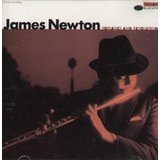
Daily Dose Of Jazz…
James W. Newton was born May 1, 1953 in Los Angeles, California and grew up immersed in the sounds of African-American music, including urban blues, rhythm and blues, and gospel. As a tee he played electric bass guitar, alto saxophone, and clarinet. In high school he took up the flute, influenced by Eric Dolphy. In addition to taking lessons in classical music on flute, he also studied jazz with Buddy Collette and completed his formal musical training at California State University, Los Angeles.
From 1972 to 1975, along with David Murray, Bobby Bradford and Arthur Blythe, he was a member of drummer and later critic Stanley Crouch’s band Black Music Infinity. Three years later in 1978 he lived in New York, leading a trio with pianist and composer Anthony Davis and cellist Abdul Wadud, that lasted until 1981. These three played extended chamber jazz and Third Stream compositions by Newton and Davis. With Davis, he founded a quartet and toured successfully in Europe in the early 1980s.
Following his European tour James performed with a wide variety of musicians, including John Carter, Mingus Dynasty, Leroy Jenkins and Chico Freeman. He would go on to release four solo improvisations for flute recordings, work with musicians from other cultures including Jon Jang, Gao Hong, Kadri Gopalnath and Shubhendra Rao. He has performed with the New York Philharmonic, Brooklyn Philharmonic, the San Francisco Ballet, California EAR Unit and the L’Orchestre du Conservatoire de Paris among others around the world. He served for five years as Musical Director/Conductor of the Luckman Jazz Orchestra.
As an educator Newton has taught at the University of California Irvine, the California Institute of the Arts, and California State University Los Angeles. In 1989 he became a published author with a method book entitled The Improvising Flute and in 2007 he published Daily Focus For The Flute.
He is an accomplished composer of classical works for chamber ensemble and orchestra, electronic music, jazz and opera, the latter composing The Songs of Freedom. He has received a Guggenheim and Rockefeller Fellowships, Montreux Grande Prix Du Disque, and Down Beat International Critics Jazz Album of the Year and has been voted the top flutist for 23 consecutive years in Down Beat magazine’s International Critics Poll. Post bop flautist James Newton continues to perform, record, tour and compose.
![]()
More Posts: flute


